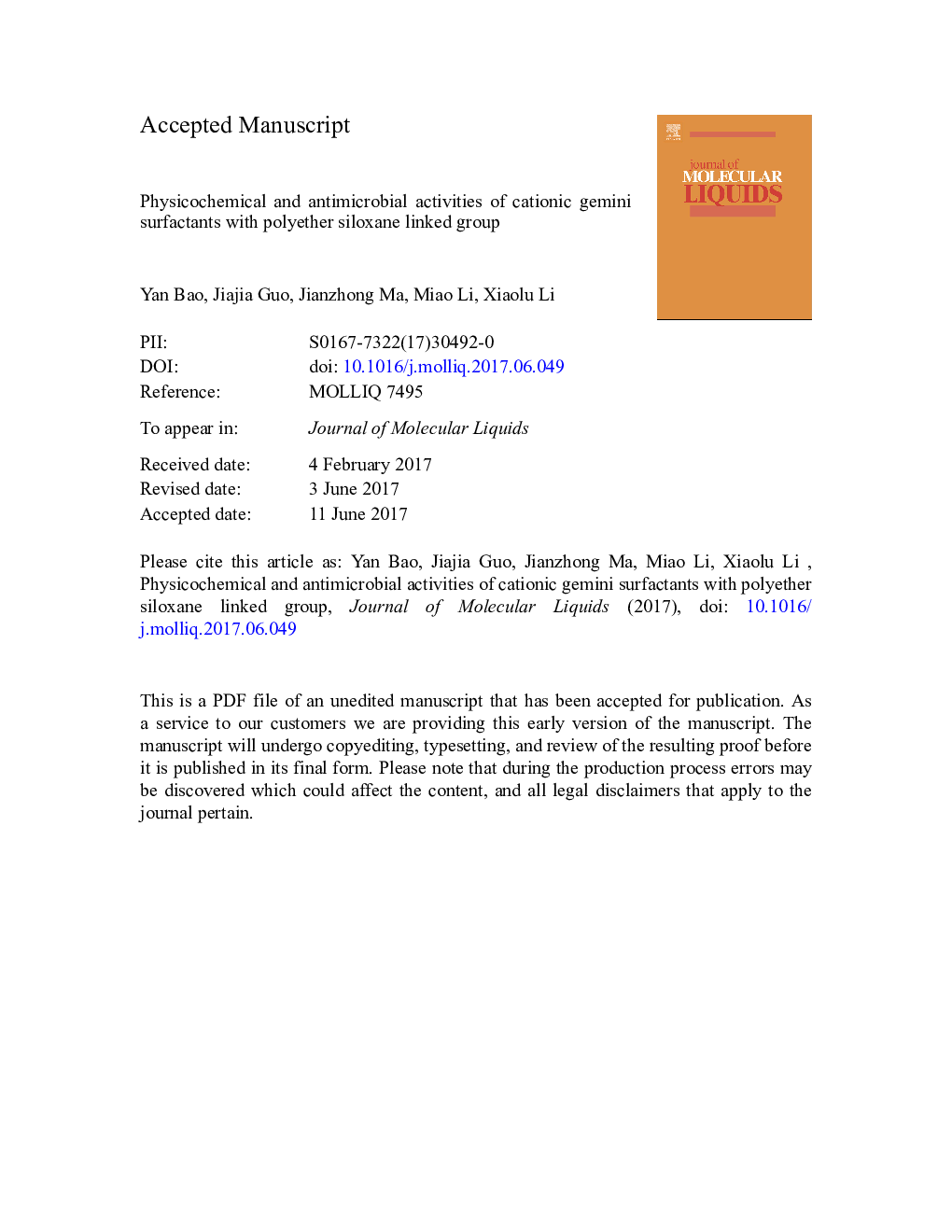| Article ID | Journal | Published Year | Pages | File Type |
|---|---|---|---|---|
| 5408400 | Journal of Molecular Liquids | 2017 | 18 Pages |
Abstract
Physicochemical activities including critical micelle concentration (CMC), wetting ability and emulsion power of cationic gemini surfactants with polyether siloxane linked group and quaternary ammonium hydrophilic headgroup (Cm-PSi-Cm, m = 8, 10, 12, 14, 16, 18) were tested using steady-state fluorescence, contact angle measurements, etc. The CMC values of Cm-PSi-Cm significantly lowered with the increase of the hydrophobic chain length, indicating that aggregation ability of Cm-PSi-Cm with longer hydrophobic chain was strengthened. Wetting ability and emulsion power of Cm-PSi-Cm increased initially and then decreased with the increasing of the hydrophobic chain length m for Cm-PSi-Cm. Moreover, antimicrobial activities of Cm-PSi-Cm on a variety of bacteria including Gram-positive bacterium (Staphylococcus aureus), Gram-negative bacterium (Escherichia coli) and mould (Aspergillus flavus) were tested using the method of inhibition zones and plate count. The results showed that C10-PSi-C10, C12-PSi-C12 and C14-PSi-C14 exhibited outstanding antimicrobial property for varieties of bacteria, implying that Cm-PSi-Cm having too long or too short hydrocarbon chain was not beneficial to inhibit microbe. All these results established the structure-property relationship of the surfactant molecule specifically the dominant role displayed by the hydrophobic chains length.
Related Topics
Physical Sciences and Engineering
Chemistry
Physical and Theoretical Chemistry
Authors
Yan Bao, Jiajia Guo, Jianzhong Ma, Miao Li, Xiaolu Li,
